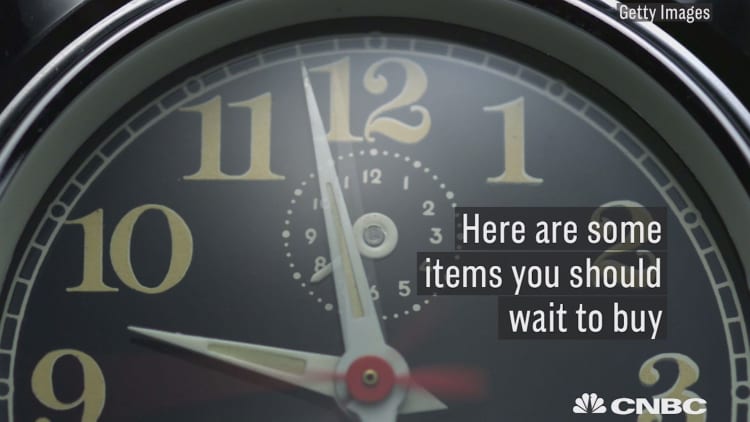
In record numbers, consumers are turning to the Internet — either via computer or mobile device — to fulfill their shopping needs.
Surging online buying is making shoppers prey for computer hackers, who are busier than usual trying to get access to sensitive data as the holiday season kicks off.
With that in mind, Cisco recently issued a warning to online shoppers and anyone bringing a new internet connected device into their house. The tech giant found there are now 19.7 billion cyber-threats a day, that's enough for three threats for every person on the planet, per day.
"The threat level definitely increases around this time of the year" said Matt Watchinski, senior director of threat intelligence at Cisco. Watchinski told CNBC the three main problems this year include:
- Viruses and spyware that can be picked up on either poorly protected or fake shopping websites;
- Internet-connected "smart" devices that don't have appropriate protection systems; and
- Ransomware, where cyber-thieves get you to click on a link, then take possession of your files until you agree to pay the ransom, usually by using Bitcoin.

How to Protect Yourself from the Threats
Watchinski gave advice for dealing with each threat. First off, he warned against visiting "questionable websites" when shopping.
"Going to your credit card's website to get a one-time credit card code, or a virtual credit card number, connected to your account when shopping online at places you haven't visited before," is one way to avoid getting fooled, he said.
That number is connected to your credit card account, but prevents customers from actually giving up their real credit card number.
The Cisco cyber-safety guru, himself a father, warned parents that "just as we teach [kids] not to wander off, we need to teach our kids to make sure nobody is using their toys to invade our home networks."
Take Personal Responsibility
He urged consumers to remember to "take personal responsibility, and update your security on a consistent basis." Watchinski stated he wouldn't buy his kid anything that allowed for unfettered Internet access.
Another danger area is the vulnerability of Web-connected cameras, which can be co-opted by an invader. While they could use them to become a "Peeping Tom," the greater threat is that they're used in a "denial of service" (DDOS) attack.
These kinds of attacks are especially prevalent around this time of the year, as perpetrators use DDOS to play games on better servers. They also knock people off of one server and onto another and to manipulate server usage, often for a profit.
Fighting Ransomware
Using a virus to effectively take data hostage is now the biggest threat for small and medium sized businesses. Cisco has deployed experts to fight Ransomware all over the world.
Watchinski told CNBC that everyone should back up all of their data, including photos. That way, if they are hit by a "Ransomware" attack, their data will be safe making the attack less effective.


